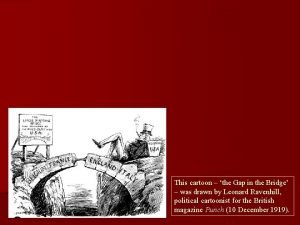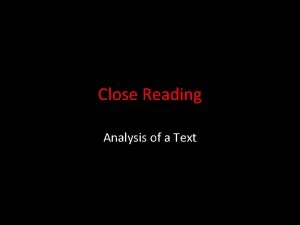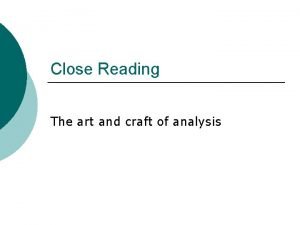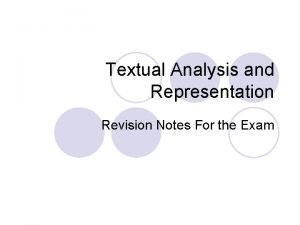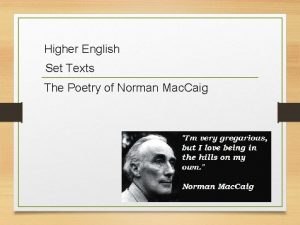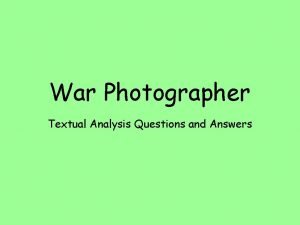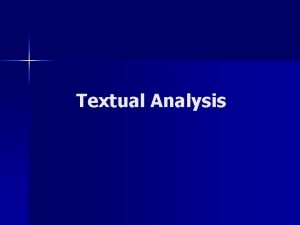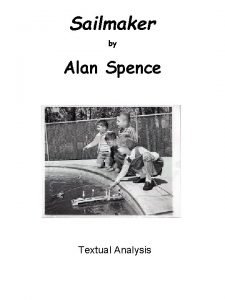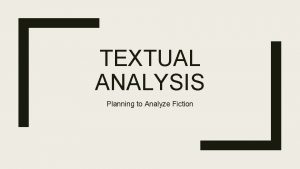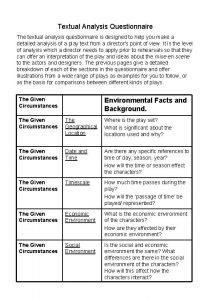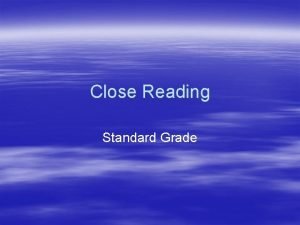Close Textual Analysis Close Textual Analysis Work in






- Slides: 6

Close Textual Analysis

Close Textual Analysis • • • Work in sections: paragraph, page, subject, etc Analyze for intrinsic and extrinsic meaning, Relationship to the rest of the text, Rhetorical devices, Structure and aesthetics. Even though you are concentrating on a single portion of the communication, it is important that you read/listen to the entire work to understand its relationship to the whole.

Detailed Work • Work to understand the denotative and connotative meanings of every word in the text. – Use your thesaurus and dictionary frequently so that you understand every possible meaning even when you think you know what is being said. • Analyze sentence structure – (simple, complex, compound-complex) and paragraph structure and progression. • • Does the passage describe a natural or artificial scene? What is the degree of plausibility, suspension of disbelief? • How vivid and explicit is the descriptive language?

You Ask Many Questions • Does it describe character as monologue or dialogue, explicit or unconscious? • Does it describe an action, develop an argument or an idea? • How is the passage sequenced, in other words, what comes before and after, and why? • Is the passage devoted to exposition, complication, turning point, crisis, climax or resolution? • What are the levels of empathy or emotional involvement? • What comedic and tragic techniques or devices are used? • In what person is the text written or delivered?

Keep asking Questions • Who is the audience? • Analyze language; pay close attention to both diction, or choice of words, (formal, informal, colloquial, concrete, abstract) and rhetorical devices. • Meter can be analyzed. Prose passages can be looked at to determine rhythm. • What socio-political or philosophical knowledge is necessary to understand the meaning of the passages. • Compare and contrast multiple passages for similar theme, style or objective.

Pull the thing together • It is not enough to just identify all these devices and answer the questions. – you must relate them to the whole, – evaluate their impact on dramatic structure, aesthetics, meaning, and objective. • What patterns emerge?

